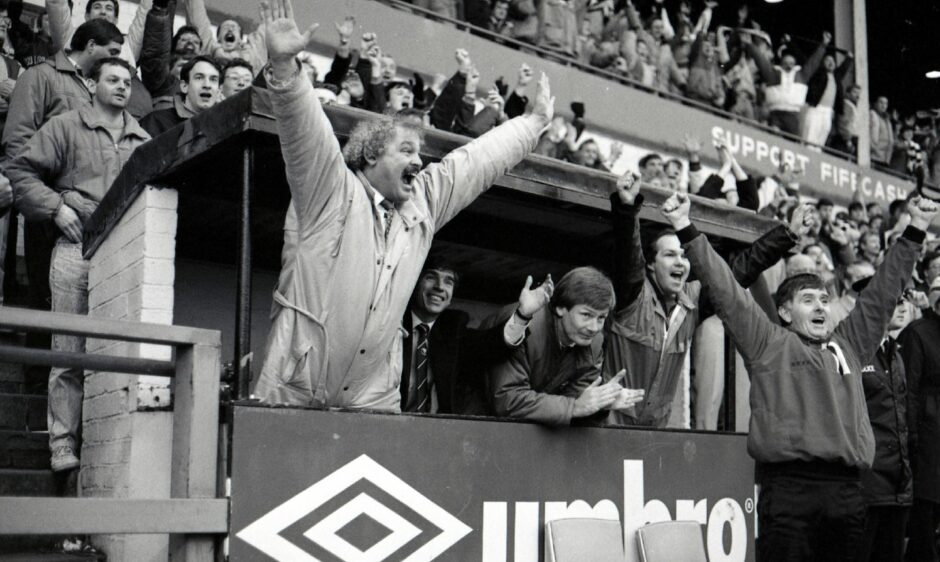
Dunfermline’s Scottish Cup dreams were to have been laid to rest at the old stadium by the cemetery in 1988.
After all, history says don’t hope on this side of the grave – or so it’s been written.
But the Pars players who ran out at East End Park to face Rangers on February 22 clearly hadn’t read that one.
And when the metal gates of East End Park were shoved open at full time Pars fans poured through and went reeling, feeling, down Halbeath Road.
The stars in the Gers side assembled by Graeme Souness had been brought crashing down to earth by Dunfermline Athletic.
The Pars players had been taken away to a luxury St Andrews hotel overlooking the Old Course for three days before the Scottish Cup clash.
Pars boss Jim Leishman, who occupied a royal suite, naturally, said ahead of the fourth-round tie: “A bit of luxury is good for the players.
“I want them to believe they are every bit as important as the Rangers players.”
The master motivator, known to have used the words of Martin Luther King to inspire his men, was hoping the golf break would see them come out swinging when Rangers came calling.
Look on my works, ye mighty, and despair…
Graeme Souness strode into Ibrox in 1986, imperious behind his moustache, and set about building a football machine that would dominate Scottish football.
The former Liverpool legend was 33 when he became the Govan club’s player-manager and ended a nine-year title drought when he led the Light Blues to the championship in 1987.
Souness guided Rangers to four Scottish titles in five years, leaving to manage Liverpool after laying the foundations for a run of success that would see the Gers win nine consecutive titles.
But “they stumble that run fast” and the Gers stumbled on the East End Park stage – fluffing their lines before an audience of 19,360.
In the corner opposite Souness for what appeared to be a mismatched bout was the charismatic Leishman.
At the age of just 29, he took charge of his boyhood heroes in 1982 and forged a side that won successive promotions to the Scottish Premier Division in 1987.
A poet perhaps not in the class of Seamus Heaney, Leishman had won fame (notoriety?) by starring in amateur dramatics and putting pen to paper.
Leishman – the youngest manager in the Premier League at the time of the Rangers game – had featured in productions of Guys and Dolls and South Pacific.
Now, the man who played Sitting Bull in Annie Get Your Gun had his sights trained on Souness’s super-squad.
“Very few people outside the club think we’ve got a chance but we definitely think we’ve got a chance and we’re going to give it all we’ve got,” said Leishman.
He sent his players out to face Rangers with the words of the Old Testament ringing in their ears and The Skids’ Into The Valley ringing around East End.
Whether his polemic and poetry was meant for the media or to inspire his players – or both – would hardly seem to matter.
The fact is that the former Dunfermline player who had to retire from the game after a badly broken leg had inspired a remarkable turnaround in the Pars’ fortunes.
They had climbed from the third tier to the top flight of Scottish football and now found themselves facing a side assembled at a cost of £5 million.
Rangers’ midfield boasted Ray Wilkins, who had starred for Chelsea, Manchester United and AC Milan while winning 84 caps for England, and Souness himself, a Liverpool great who won three European Cups while at Anfield.
The Rangers starting line-up was so rich in talent, in fact, that Souness was able to leave Britain’s first million-pound player, Trevor Francis, on the bench.
The Light Blues’ back line included England goalkeeper Chris Woods and Richard Gough, who had been brought to Ibrox from Spurs for a record fee of £1.5 million.
Despite missing the injured Ally McCoist, who had already notched two hat-tricks against the Pars that season, Rangers’ attacking players included Ian Durrant, skilful winger Mark Walters and Davie Cooper, arguably one of the most talented footballers Scotland has produced.
The Dunfermline Athletic back line – including beloved skipper Norrie McCathie and Dundee United import John Holt – will surely have been anticipating a long day in the trenches.
Dunfermline Athletic
Dave McKellar
Graeme Robertson, Norrie McCathie, Vetle Andersen, John Holt,
Bobby Smith, Mark Smith, Craig Robertson, Stuart Beedie,
Ross Jack (Eric Ferguson), John Watson.
Rangers
Chris Woods
Richard Gough, John Brown, Graham Roberts, Jan Bartram,
Davie Cooper (Scott Nisbet HT), Ray Wilkins, Derek Ferguson, Graeme Souness
(Trevor Francis 71), Ian Durrant, Mark Walters.
And yet Mark Smith fired the first shot and got the Pars off to a dream start when his sixth-minute effort from distance, struck from out towards the touchline, flew over the head of Woods.
Midfielder Smith turned, arms aloft to take the acclaim of the jubilant Pars fans in a manner that suggested he had, of course, meant to lob the England goalkeeper.
Mark Smith in 1987. Promising winger who signed for Celtic from Queens Park. Moved to Dunfermline in 1988 where he scored a memorable goal against Rangers which helped the Par to a famous win. pic.twitter.com/rpPADbilJE
— St.Anthony (@Stephen4_2) March 29, 2022
“I wouldn’t say it was a fluke – I would say it was a good cross,” a grinning Leishman said afterwards.
The contest ebbed and flowed thereafter, with Rangers battling to get back into the cup tie.
Former Dundee defender John Brown was deemed to be battling too hard when he was ordered off in the 43rd minute for a challenge that brought his shoulder and elbow into contact with goalscorer Smith.
Much as he likes a laugh, Leishman was at pains to assure people he took football seriously.
“People have this image of Jim Leishman and that is fine,” he told us before the game.
“But that doesn’t mean I don’t take the game seriously.
“People maybe think Dunfermline is a holiday camp where people are cracking gags all the time.
“I can assure you there’s a lot more to it than that.”
His team’s second goal certainly attested to time well spent on the training ground – a corner from Stuart Beedie flicked on by Smith into the path of the on-rushing John Watson, whose flying header put the Pars up 2-0.
A goal and an assist, and a display that contained almost non-stop running, would earn Smith the man of the match award.
But the winger’s work-rate meant he fainted at the end of the game – the apostle Mark a true believer in the gospel according to Jim – and his manager had to collect it for him.
Such were the lengths Leishman’s men had gone to to secure victory.
When hope and history rhyme…
Memory is unreliable – faces fade, conversations alter over time and, when it’s at its worst, we walk into a room and forget why we’re there.
But this win – John Watson’s strike particularly, perhaps – must remain crystal clear in the mind’s eye of each Pars fans there that day.
The horizontal Watson, held forever airborne by recall, formed as he met the ball an inverted exclamation point – his goal a literal and metaphorical finish to the Pars’ triumph.
After the laughter comes tears…
The season ended badly for the Pars, though, and they were relegated from Scotland’s top flight.
With this win, however, these EastEnders had really put on a show and gone some way towards making amends in advance.
The club was heading back to the First Division but Jim Leishman’s team had given the supporters something to keep them warm on the way down.
And as for the ecstatic Leishman, his comic side was on full display when, in a post-match interview with STV’s Jock Brown, he was asked about the health of collapsed winger Smith.
“Who cares, Jock? We won!”
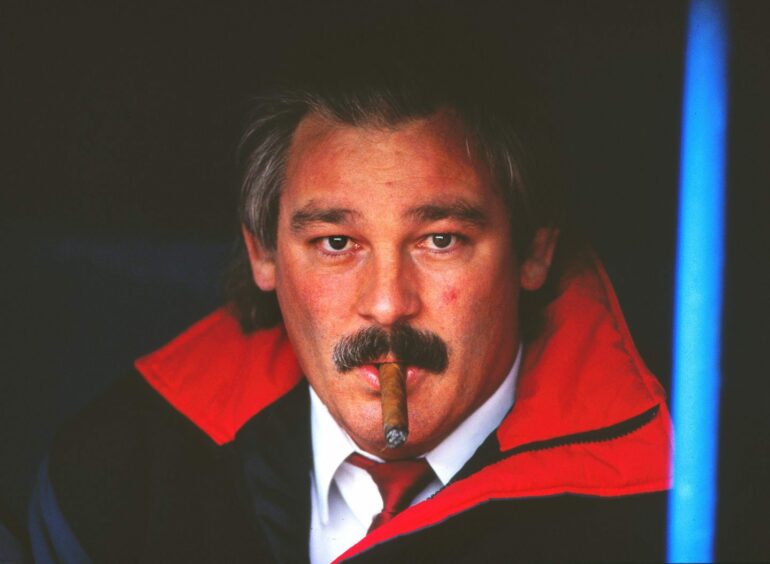
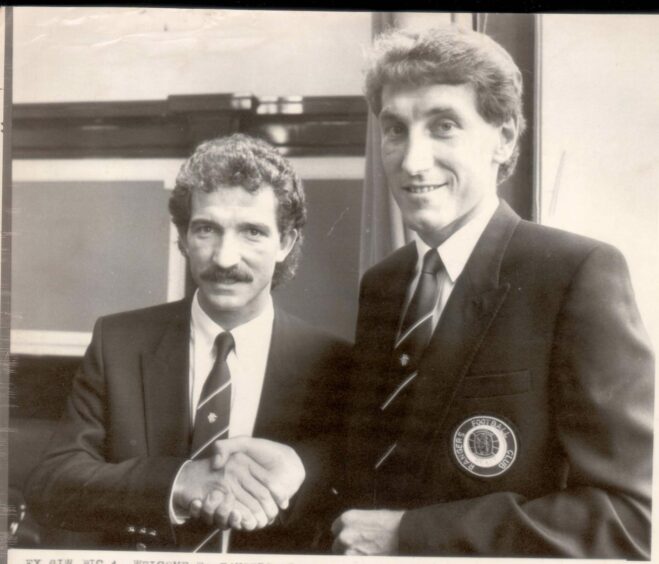
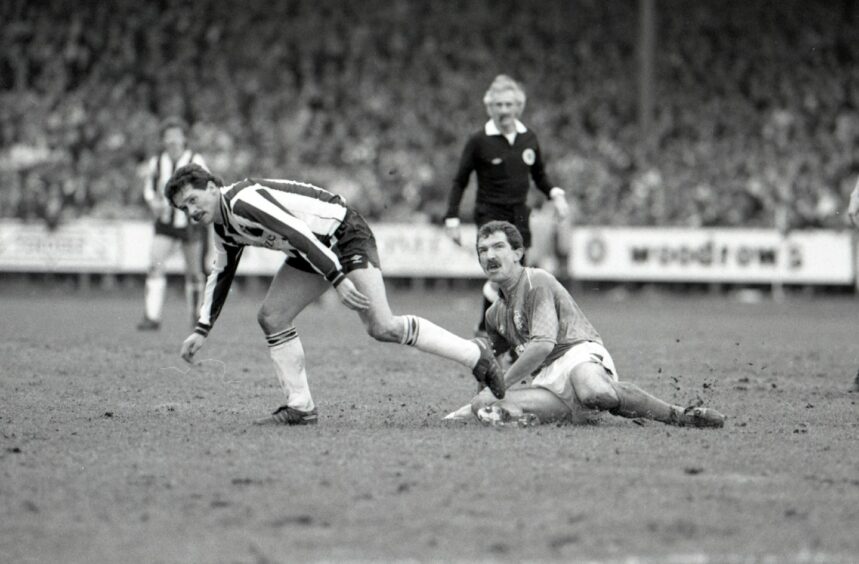
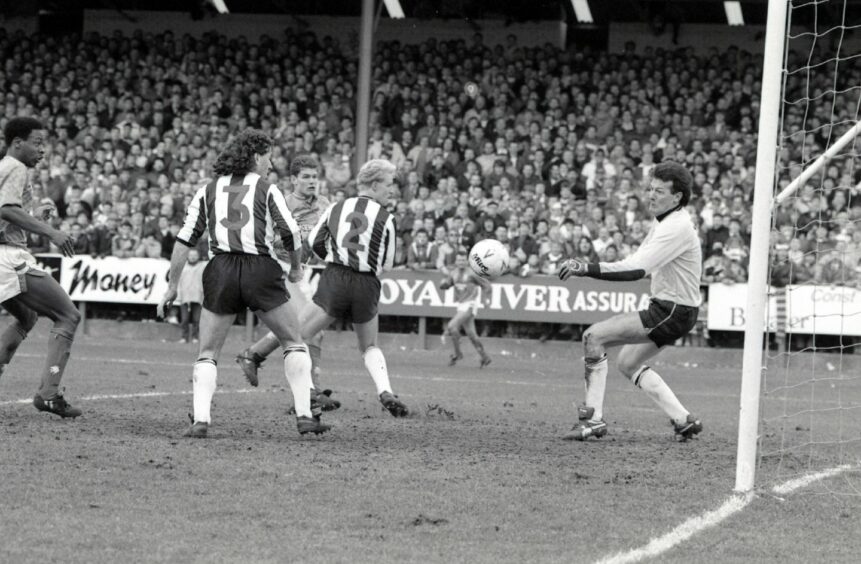
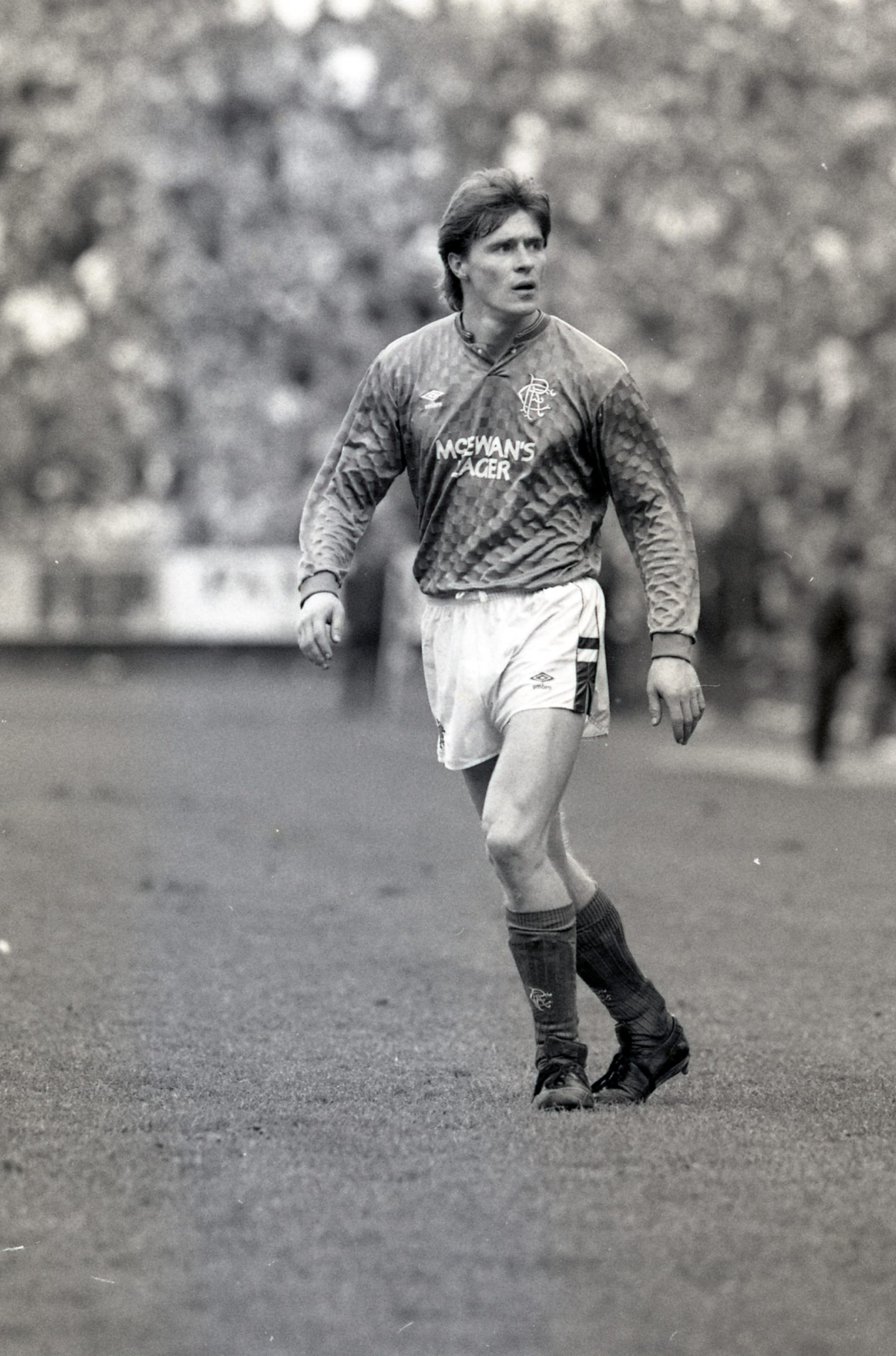
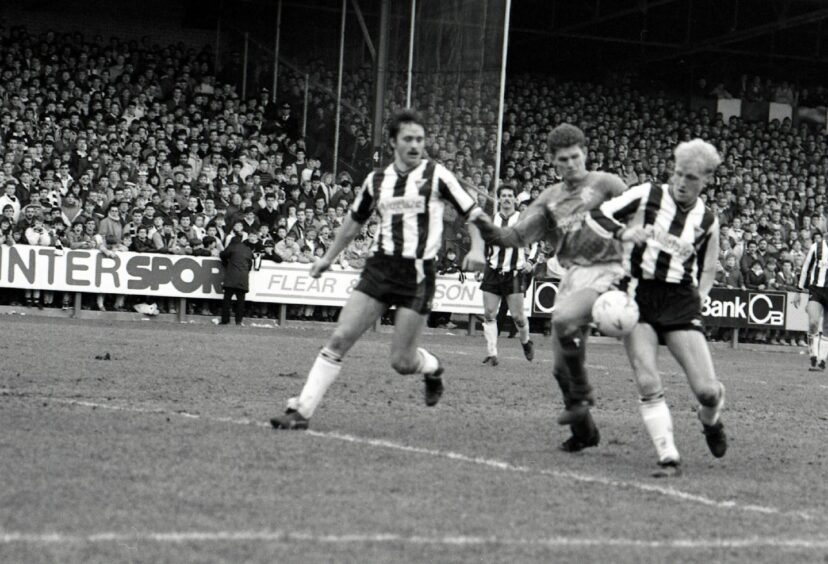
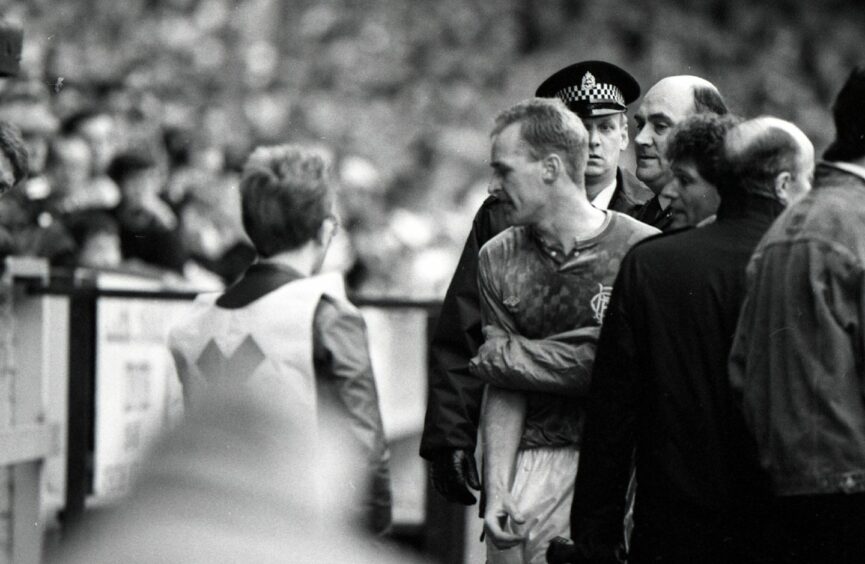
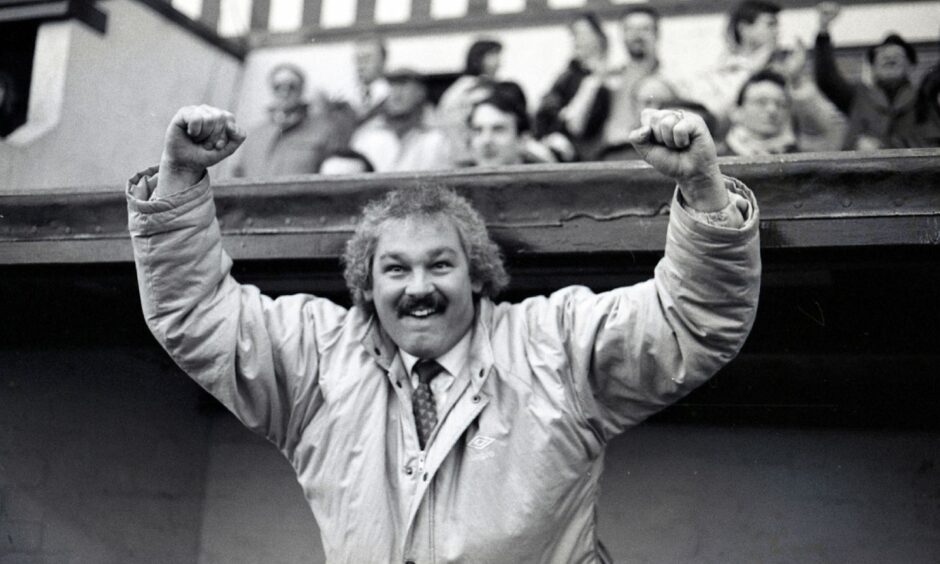
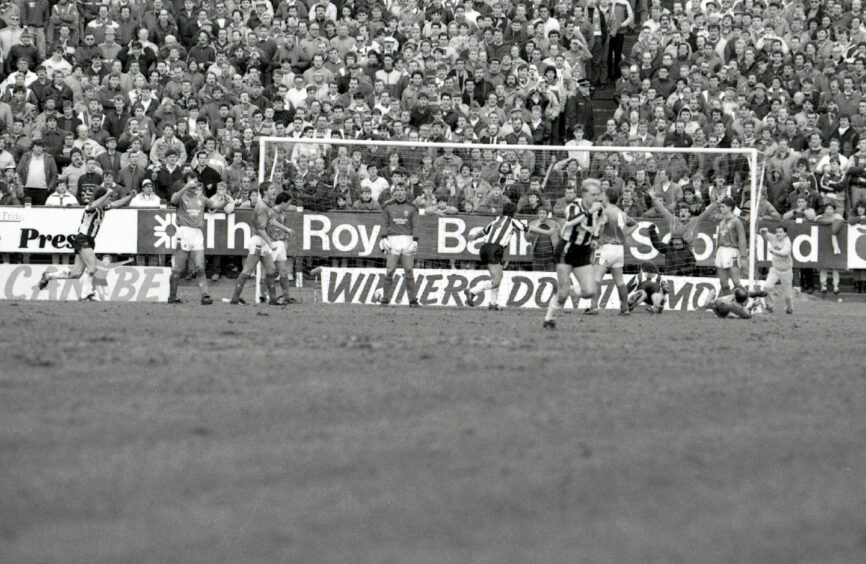










Conversation